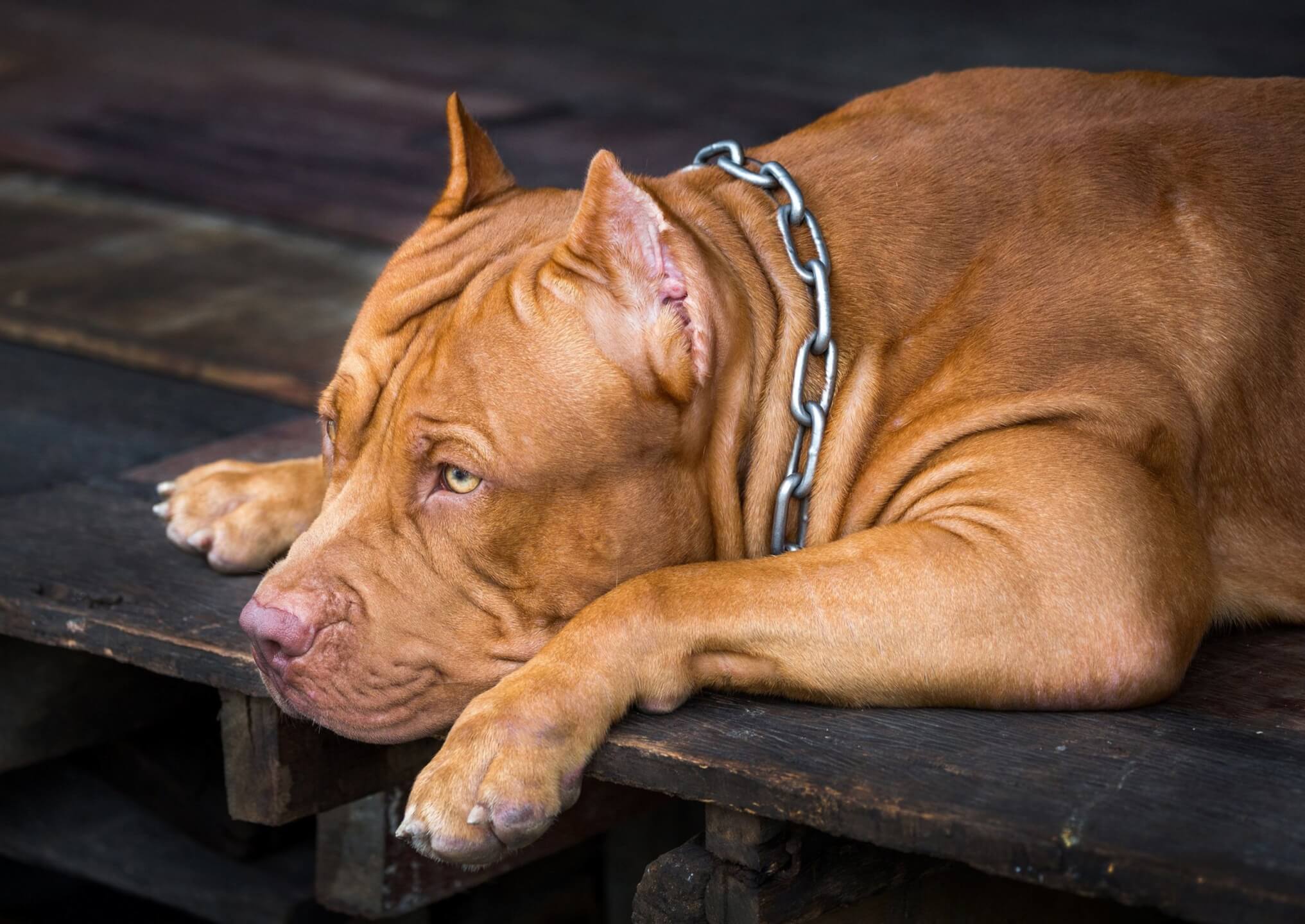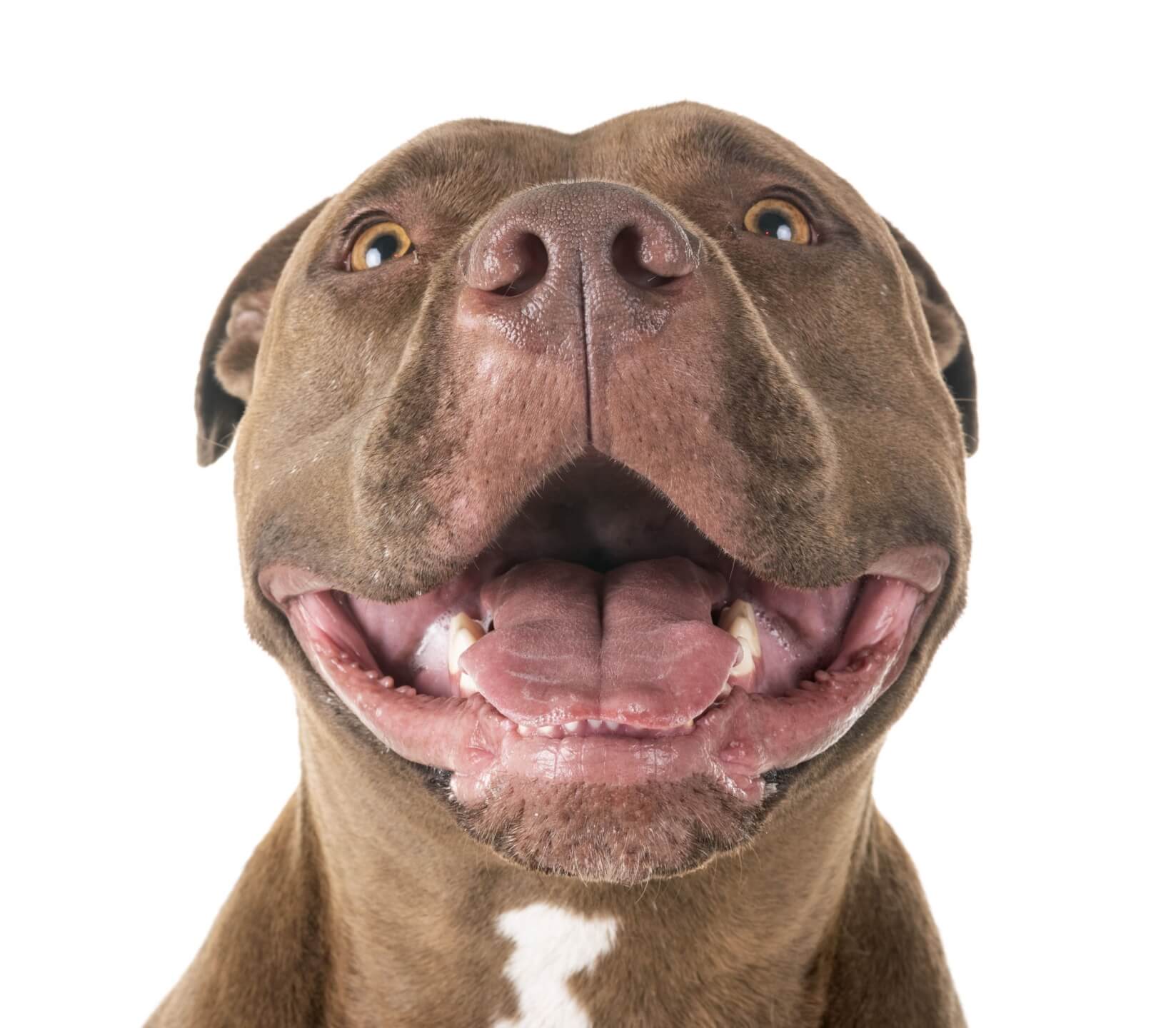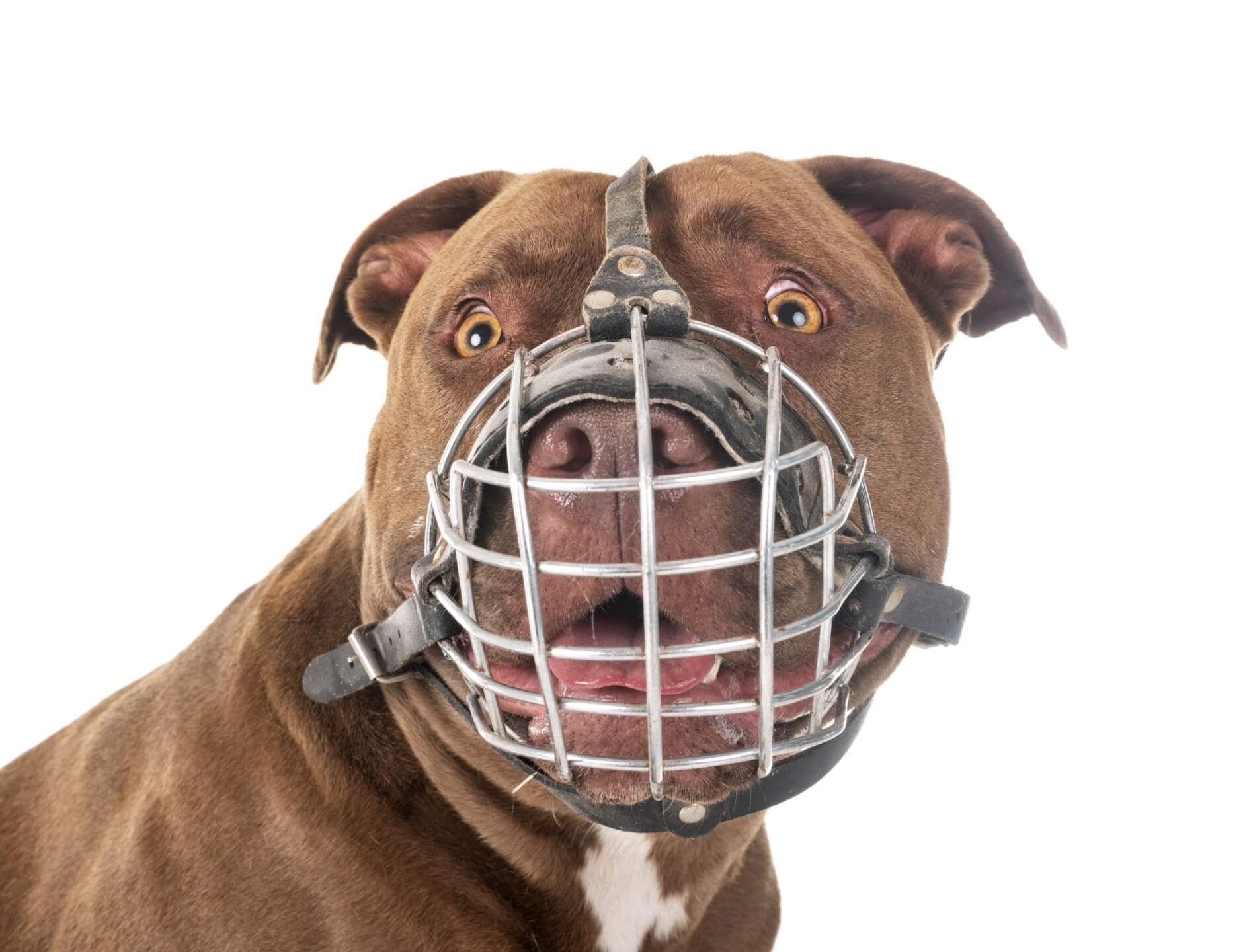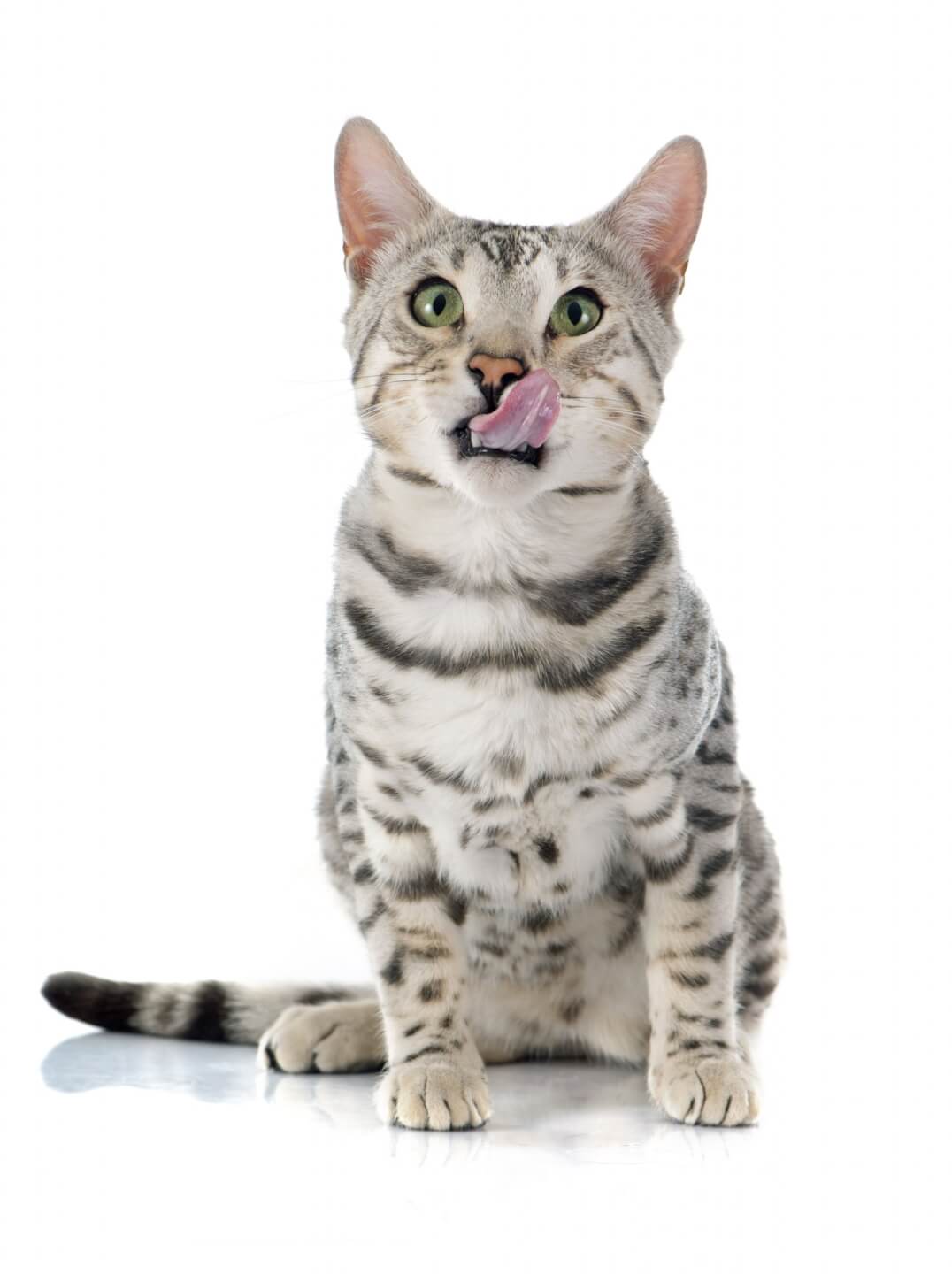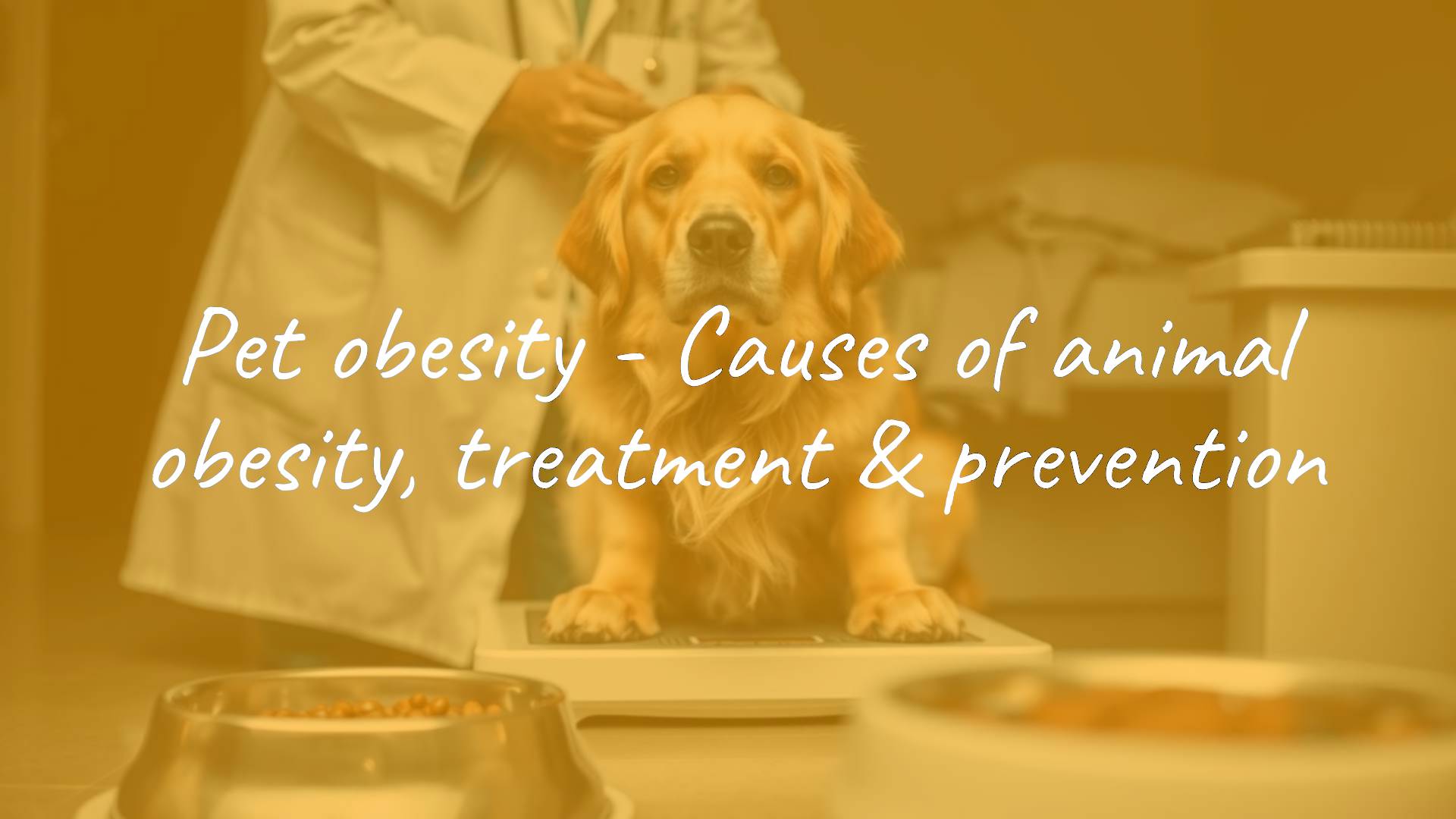
Do you know that every tenth dog is obese and 39% of dogs are overweight?
In my practice, every day, I deal with animals that have excessive bodyweight about their average weight. I also regret to see that the percentage of overweight or even fat dogs is increasing …
In most cases, the owners are responsible for this condition of the pet, not realizing what harm they are doing to him.
In this article, you will learn when we can talk about obesity, why obesity is dangerous, and how to slim a dog safely.
What is obesity in a dog?
Obesity is a condition of excessive accumulation of body fat, which leads to exceeding the normal bodyweight of the dog by more than 19%. Obesity is now recognized as the most common nutritional problem among dogs.
In animals, three degrees of excess weight can be distinguished:
- Simple overweight – we find it when the dog’s body weight exceeds 9% of average weight. This is a stage that you can quickly correct by changing your dog’s eating habits and increasing physical activity.
- Overweight in a dog – when we are dealing with an increase in weight from 10 to 19% above normal body weight.
- Dog obesity – when our pet carries 20% too much weight about the correct weight.
What are the causes of obesity in dogs?
The modern lifestyle of many people with pets means that we have less and less time for physical activity with our pets. It is also essential to choose the most convenient form of feeding fast and ready commercial food, which our pet tolerates or wants to eat. We do not always think about the impact of food on the body of our animal – we are more worried about our dog’s lack of appetite (and rightly so) than his excessive, in the understanding of many people, healthy, appetite. The immediate cause of weight problems in my patients is the imbalance in the supply of energy from food about the need for it. Many owners feed their pets between meals, thus providing a constant surplus of energy, while not providing enough movement. And this surplus, unfortunately, does not disappear magically, it contributes to the constantly growing body weight and, as a consequence, to obesity.
Factors promoting dog obesity
Of course, some factors significantly contribute to the occurrence of obesity in dogs, even with proper feeding.
Factors contributing to dog obesity:
-
- Breed of dog. The breeds considered to be predisposed to excessive body weight are:
-
- Basset hound
- Retriever
- Cavalier King Charles,
- Spaniel,
- Cocker Spaniel,
- Scottish Terrier,
- Cairn Terrier,
- Long-haired dachshund,
- Beagle,
- Long-Haired giant dogs.
- Dog’s gender and breeding status. Most often applies to bitches after sterilization.
- Dog’s age. The most significant increase in weight is observed in dogs up to 10 years of age, above this age due to metabolic changes body weight begins to decrease
- Metabolic Disorders. We have problems with hypothyroidism, diabetes, Cushing’s disease and hormonal contraceptive problems in maintaining normal body weight.
- There is only one animal in the house. This seemingly trivial factor means that the dog has no incentive to be active while the owner is not at home.
Why do we overfeed our dogs and lead to obesity?
Often this is due to the desire to compensate the animal for a long absence with a tasty snack or delicacy. It works on the principle of excessive anthropomorphism – we deal with the dog like a child – we give a reward for waiting for us and the lack of adequate time for a pet. Another reason is the lack of adequate knowledge regarding nutrition, proportions, caloric demand of our dog depending on his age, breeding status or physical condition. For example, if our castrated Golden Retriever dog tastes only puppy food and only tolerates this food and has access to the will, then in a short time we will see that our biscuit no longer fits in your favourite chair and walking becomes for it is a real challenge. Another factor that I am fighting as a veterinarian is feeding with leftovers or lots of treats. Some dog owners argue this way: My dog likes our human food and looks like we eat so much that our heart would break if we did not give at least a piece of sandwich. And unfortunately, this piece of milk served as an addition to basic food transforms into kilograms over time, which the dog can bear in excess …
You may be interested in some facts:
-
- One slice of bread with margarine and cheese = 180 kcl
- One piece of cake = 140 kcl
- One slice of bread with pate = 30 kcl
- 1 boiled potato = 80 kcl
- One slice of cheese (20 g) = 75 kcl
- 1 slice of sausage / salami (25 g) = 75 kcl
- 1 cup of semi-skimmed milk (150 ml) = 70 kcl
- 1 biscuit = 55 kcl
- One slice of sausage 15 g = 30 kcl
- One rice cookie = 35 kcl
- 1/4 apples = 15 kcl
- one carrot <20 g <5 kcl
What is the risk of overweight in a dog?
In obesity in dogs, we observe an increased risk of serious diseases.
These are, among others:
- Respiratory and cardiac diseases (cardiac arrhythmias, hypertension, secondary heart disease).
- Kidney and vascular diseases.
- Blood lipid profile disorders.
- It makes it difficult to perform any surgery and anaesthesia.
- Endocrine diseases (diabetes, hyperadrenocorticism, hypothyroidism).
- Orthopaedic diseases (inflammation and degeneration of joints and ligaments, atrophy of the articular surfaces, discopathy, muscular disorders).
- Decreased immunity (susceptibility to microbial infection).
- Disorders of reproduction.
- Cancer (mammary gland tumours, the emergence of precancerous cells).
- Dermatological diseases (allergies).
- Behavioural Disorders.
It is also worth mentioning that your quadruped’s life can be much shorter, precisely because of the factors discussed above.
How to check if the dog is too fat?
How to recognize obesity in a dog? The basis is medical history and clinical examination. Most often, we compare weight and track its height with previous measurements. The veterinarian can also refer to the dog’s current weight to the reference weight if it is dealing with a specific breed of animal.
During the interview, the most frequently reported problems by the dog owner are:
- apathy,
- reluctance to walk,
- frequent fatigue
- problems passing faeces
- skin problems, including allergies.
It is worth informing your veterinarian about your eating habits or illnesses during the interview. A reliable source of information is the so-called dog body condition assessment tables, in which several grades are distinguished. The simplest and most common of them are presented below.
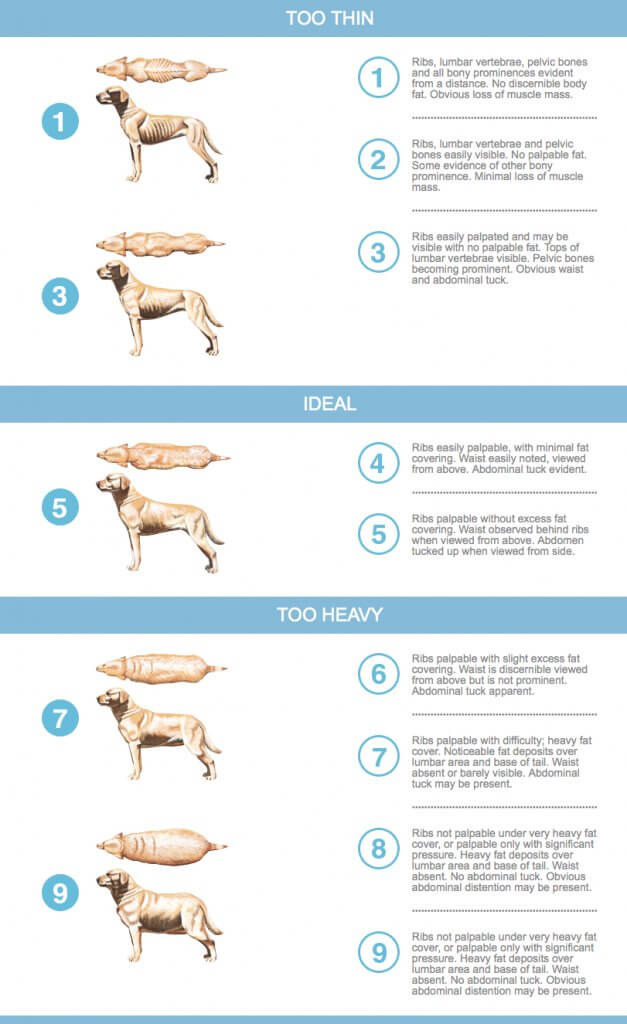
When to start slimming the dog
A common question I face during my practice is: So when should I start slimming my dog? And unfortunately, my most common answer is: Already! Most of them get to me dogs already a few percent overweight. And this is the moment when by changing several eating habits or increasing the amount of exercise, you are able to improve the comfort of your animal’s life with a little bit of discipline.
How to combat dog obesity?
Anyone who has ever been on a diet knows how long the process of losing extra fat is. It is no different in the case of dogs. It cannot be brought about by fasting to a sharp decrease in weight. This is not only unhealthy, but also very dangerous.
When the owner appears with a fat dog:
-
- First of all, I do an extensive interview.
- Perform additional tests to exclude metabolic diseases.
- Together with the owner, we set an action plan for the next few weeks.
Weight loss plan for a fat dog
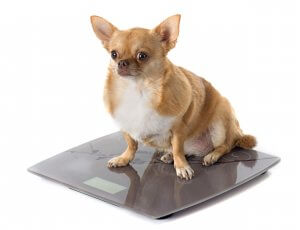
Then we write the next points of the plan:
- Type of nutrition – whether it will be wet food (e.g. homemade food) or commercial wet or dry food, as well as the number of meals during the day.
- We set the daily caloric demand for the target body weight.
- We include specific delicacies and their quantity in caloric demand.
- We set specific deadlines for control and weighing.
- We establish a plan of physical activity tailored to the animal’s capabilities, age and the owner’s involvement.
- We determine the real-time of weight loss implementation.
During the diet visit, I draw the owner’s attention to distinguishing between animal hunger and begging behaviour. In this way, we try to eliminate behaviours that most often lead to the problem of obesity – that is, overfeeding. Establishing the exercise program must be adapted to the condition of both the owner and the animal, so as not to aggravate the problems, for example, degenerative ones. It is only when the weight decreases that we try to gradually increase both the time of physical effort and its intensity. We usually start with calm walks at a steady pace, passing over trot and running over time and kilograms.
Also, massaging and regenerating muscle massages are recommended, which I show in the office. Over time, when the owner observes the results, his motivation increases by himself, and he is happy to report on the weight loss plan. The benefit is often mutual – along with the dog, the owner gains better condition as well as a decrease in his body weight and an increase in muscle mass. Slimming therapy for a large dog in comparison with a small dog differs only by choosing the right nutritional requirements. The situation is similar when choosing a diet for dogs with other diseases, e.g. degenerative diseases – we always want the right food dose to suit age, fitness and needs.
Diet for an overweight dog
The most crucial issue is not the type of diet, but its appropriate caloric content matched to the needs of your dog – his condition and weight. Usually, a 30-35% caloric reduction can effectively reduce body weight.
Regardless of the type of food, I use a few rules to control the number of calories I give:
-
- The food should be continuously weighed with the same weight – measuring in cups or glasses often increases energy supply by as much as 10%.
- Meal sharing – the supply of 3 or 4 meals of a separate food dose effectively eliminates feeding and provides the animal with a sense of satiety, preventing begging.
- Reducing the ration by the caloric value of the delicacies – and I know from experience that the delicacies owners can not give up.
- Appointment of one person responsible for serving the dog’s meals.
- Choosing the right quality of food – dry if the animal gets used to such a form; cooked if the owner wishes.
Dietary supplements and pharmaceuticals, which are often asked by owners expecting quick effects, are not used on the veterinary market.
Veterinary feed for obese dogs
Dietary diets that are used in slimming therapy have common characteristics regardless of the company producing – they have limited energy in the food ration. This is achieved by reduced fat content, increased protein and dietary fibre content.
Home slimming diet for a dog
In the case of laying the so-called home diet, i.e. based on cooked products, due to the inability to supplement all products, it is necessary to add some minerals and vitamins. Supplementation depends on the animal’s state of health and the requirements of its body. I mainly rely on multi-vitamin preparations for puppies, which contain all the necessary minerals and vitamins. I also recommend the addition of zinc as an ingredient supporting immunity, which under stress such as weight loss can significantly decrease.
When I create a diet for patients, the fundamental questions I ask are:
-
- What age is the obese dog?
- Does the pet have high physical activity?
- Is the pooch sterilized?
- Does it have an intolerance to certain ingredients?
- Have any fat problems been seen in organ function in the kidneys, liver or heart?
At the very end of the interview, the owner and we reach a compromise of ideal weight and write a weight loss plan for the coming weeks and months with further follow-up appointments. If you want to slim down your dog, remember that all additions, prizes and other snacks should also be agreed with the dietitian, because even a “light” snack can prove fatal to diet assumptions. I had a case that from snacks/awards, the animal got a second, quite caloric meal altogether, and we still wondered why, despite the appropriate calculations, the weight would not twitch. Even sometimes, the fat dog gained weight.
How to feed a dog? One or several meals a day?
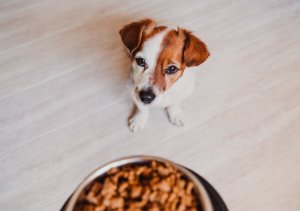
The method of feeding depends on the habits of the animal. It is definitely better to give the calculated daily dose of a meal divided into three administrations per day. This ensures adequate animal satiety and prevents overfeeding. The animal does not feel hungry during the day, and thanks to this, it is easier for us to avoid stealing food or eating everything that can be swallowed before the owner notices. However, there is a large group of animals that used to eating once a day will not be able to get used to more frequent food doses. This is a very individual matter – we also discuss such topics during a diet visit.
Sample diet for a 10 kg dog
Diet for sterilized dogs:
age: 6 years old,
medium activity – three 30-minute walks in the park,
no allergies to nutrients
current weight 10 kg, target weight 8-8.5 kg
Caloric demand:
394 kcal per 10 kg
380 kcal per 9.5 kg
366 kcal per 9 kg
353 kcal per 8.5 kg
339 kcal per 8 kg
Components of a home diet for a female, proposal 1
Chicken breast cooked, skinless: 232 grams.
Barley pearl barley: 3 glasses.
Rapeseed oil: 1 and 1/2 tsp.
Meat and bone meal: 2 tsp.
Salt used for cooking: 1 tsp.
Multivitamin preparation: according to the manufacturer’s instructions.
Zinc: 100 mg tablets 1/2 tablet
Portion weight after preparation: 723 grams.
Portion kcal / gram: 1, 41 kcal / g.
Given these values, it can be calculated that:
female weighing 10 kg should get 279 grams,
a female with a weight of 9.5 kg should get 269.5 grams,
a female weighing 9 kg should get 259.5 grams,
a female with a weight of 8.5 kg should get 250 grams,
a female of 8 kg should get 240 grams,
Components of a home diet for a female, proposal 2
Chicken breast cooked: 232 grams.
Whole grain pasta: 2 cups.
Canned red beans, drained: 2 cups.
Broccoli, chopped, cooked: 1 cup.
Rapeseed oil: 5 tsp.
Meat and bone meal: 1 tsp.
Salt used for cooking: 1 tsp.
Multivitamin preparation: according to the manufacturer’s instructions.
Zinc: 100 mg tabl 1/2 tabl.
Portion weight after preparation: 1223g.
Kcal / gram of serving: 1.38 kcal / g.
Considering these values, it can be calculated that:
a female 10 kg should get 285.5 grams,
a female with a weight of 9.5 kg should get 275 grams,
a female of 9 kg should get 265 grams,
a female with a weight of 8.5 kg should get 256 grams,
a female 8 kg should get 246 grams.
What is the difference between a home diet and commercial slimming food?
Homemade feed
Foods prepared at home are based on ingredients that virtually everyone has on hand.
Their characteristic feature is greater palatability through cooking as well as higher water content.
Unfortunately, they require the supplementation of some ingredients – it depends on the health condition and the needs of the animal.
How much for home-cooked food?
The cost of cooked food prepared at home is difficult to determine, because the amount of time spent on preparing, considering and portioning it should be added to home food. However, sometimes there is no way out because the animals are not able to eat other food than cooked. Among my patients, or instead of their owners, some like to cook meals for their pet.
Commercial food for obese dogs
Commercial food for fat dogs is definitely a more convenient form of administration – both dry and wet versions. They contain a large amount of protein, giving the impression of satiety. The so-called negative energy balance also characterizes them – that is, to digest protein, the dog consumes additional energy.
Commercial slimming foods are rich in fibre – both soluble and insoluble fibre, which by binding the water in the stomach for a longer time, gives the impression of satiety.
Slimming the dog after sterilization
After sterilization, the caloric demand of some dogs is reduced by up to 50%. This means that the animal, in order not to gain weight, should receive half the amount of food ration after sterilization. Unfortunately, it is usually the opposite – the owners wanting to reward the animal for the hardships of the procedure – they provide up to 50% more food! Besides, an animal lacking sex hormones is more difficult to get a feeling of satiety, and the appetite increases significantly. Here is our role, the animal’s protector, to watch over the right amount of food.
Slimming dog and hormones
Hormones play a significant role in regulating the body, including maintaining healthy body weight.
Thyroid hormones, which affect the preservation of adequate mass, play an additional role in dogs.
In the presence of hypothyroidism, it is often difficult for a dog to maintain adequate body weight.
That is why, if, despite limiting the food dose, the animal still has too high body weight, it is worth checking thyroid hormone levels.
Is it worth castrating/sterilizing a fat dog?
In a situation of obesity in a reproductive animal, castration/sterilization should take place as much as possible, but after partial weight reduction.
Obesity is the presence of sex hormones can result in diabetes in females because diabetes is closely related to the presence of progesterone.
In addition, unsterilized and obese females are more likely to have purulent endometritis and hormonal disorders.
Caloric demand of a dog depending on the activity
| dog weight | ,working | low activity | castrated/sterilized | over ten years of age good body weight |
|---|---|---|---|---|
| 5 kg | 936 kcal / day | 421 kcal / day | 374 kcal / day | 461 kcal / day |
| 30 kg | 3589 kcal / day | 1615 kcal / day | 1436 kcal / day | 1775.5 kcal / day |
How to slim a fat dog and prevent yo-yo effects
Achieving the desired body weight in our dog does not release us from the need to follow the rules set out at the beginning of the weight loss program. The ration should be maintained at the recommended amount, and physical activity should be as regular as during the program. The frequency of follow-up visits may be lower, but constant to capture weight gain at an early stage and modify your existing weight loss plan. In my professional work, I have often written slimming programs. Until now, I was lucky that the owners were very motivated, and their obese patients quickly returned to normal body weight.
Because my role as a veterinarian is not to scare, but to help the animal and carer, we always choose diets and dog slimming plans so that both parties have a real sense of their implementation. Because everything depends on you – the basis of success is the involvement of the owner. Do you want to learn more about slimming your dog or composing a well-balanced diet at home? Place a comment below the article.



